Research
Blockchain Gaming Part 2: Non-Fungible Tokens
This is part two of a three part series on Blockchain Gaming. You can read part one with ecosystem research on Blockchain Beach!
What is a Non-Fungible Token?
Non-Fungible Tokens (NFTs) are unique digital representations of defined digital assets
- In the real world, the majority of luxury assets – those that are considered to have scarcity value – are non-fungible (real estate, cars, boats, art, vintage baseball cards, even people)
- Identity & reputation is another important NFT use case for gaming
Benefits of NFTs
- Transferability: because NFTs are held by the user instead of the game developer, the user has the ability to trade the NFT on third-party marketplaces without permission from the game developer
- Authenticity: the token standard helps prove ownership of the asset
Token Standards
- An NFT token standard (i.e. ERC721) is a free, open standard that defines a minimum interface a smart contract must implement to allow unique tokens (NFTs) to be managed, owned, and traded

Standards for Digital Asset Ownership
Today, there are three defined levels to standards for digital ownership:
Digital Assets Level 1:
- A digital asset is digital text or media, whose ownership you control inside of a game or application
Digital Assets Level 2:
- ….whose ownership can be verified on a blockchain
Digital Assets Level 3:
- …and whose controls adhere to a broadly accepted protocol so that the digital objects can be sent to third party markets
We are currently at the third level with token standards such as ERC721, dGoods and Simple Assets, which allow smart-contracts to hold an ownership database of unique items
Non-Fungible Token Ecosystem
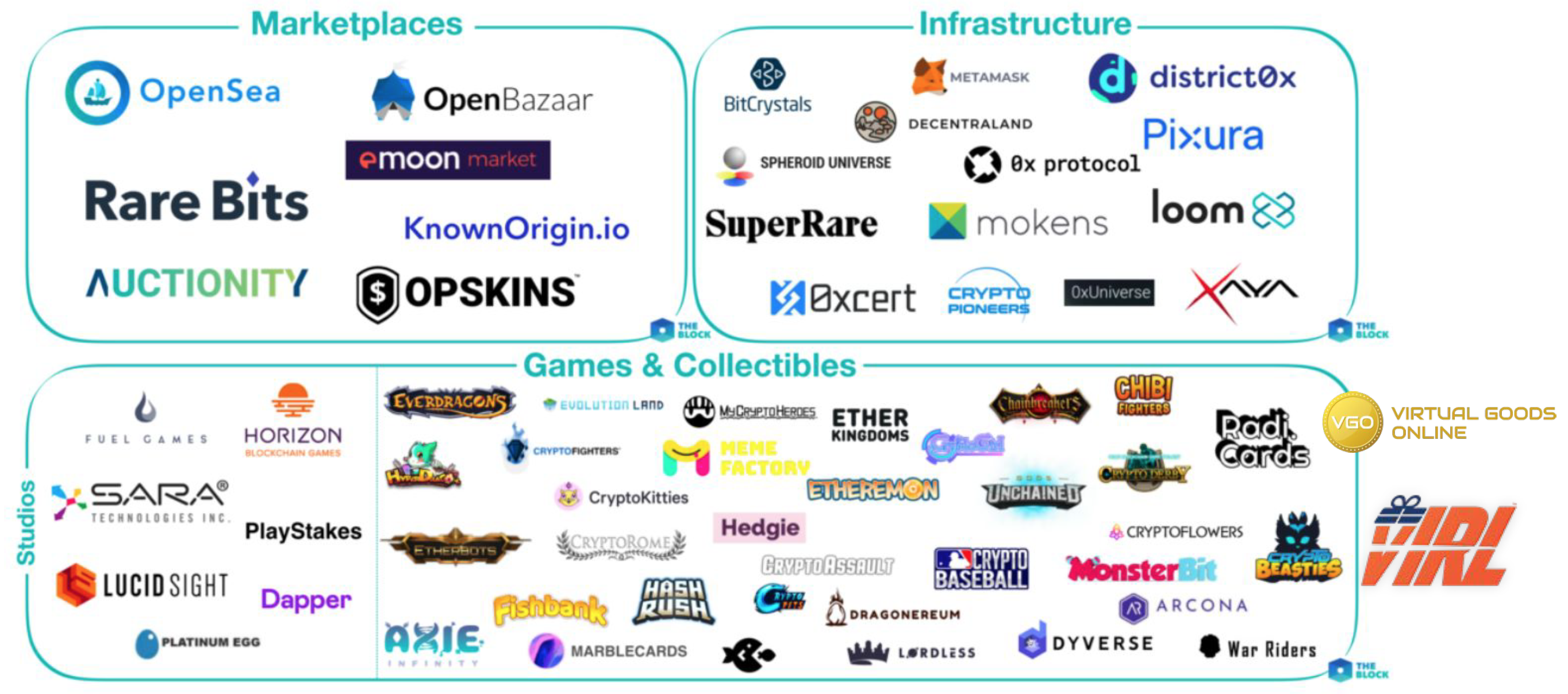
Is NFT commerce the next iteration of e-Commerce?
Over 7.5M NFT Transactions in 2018
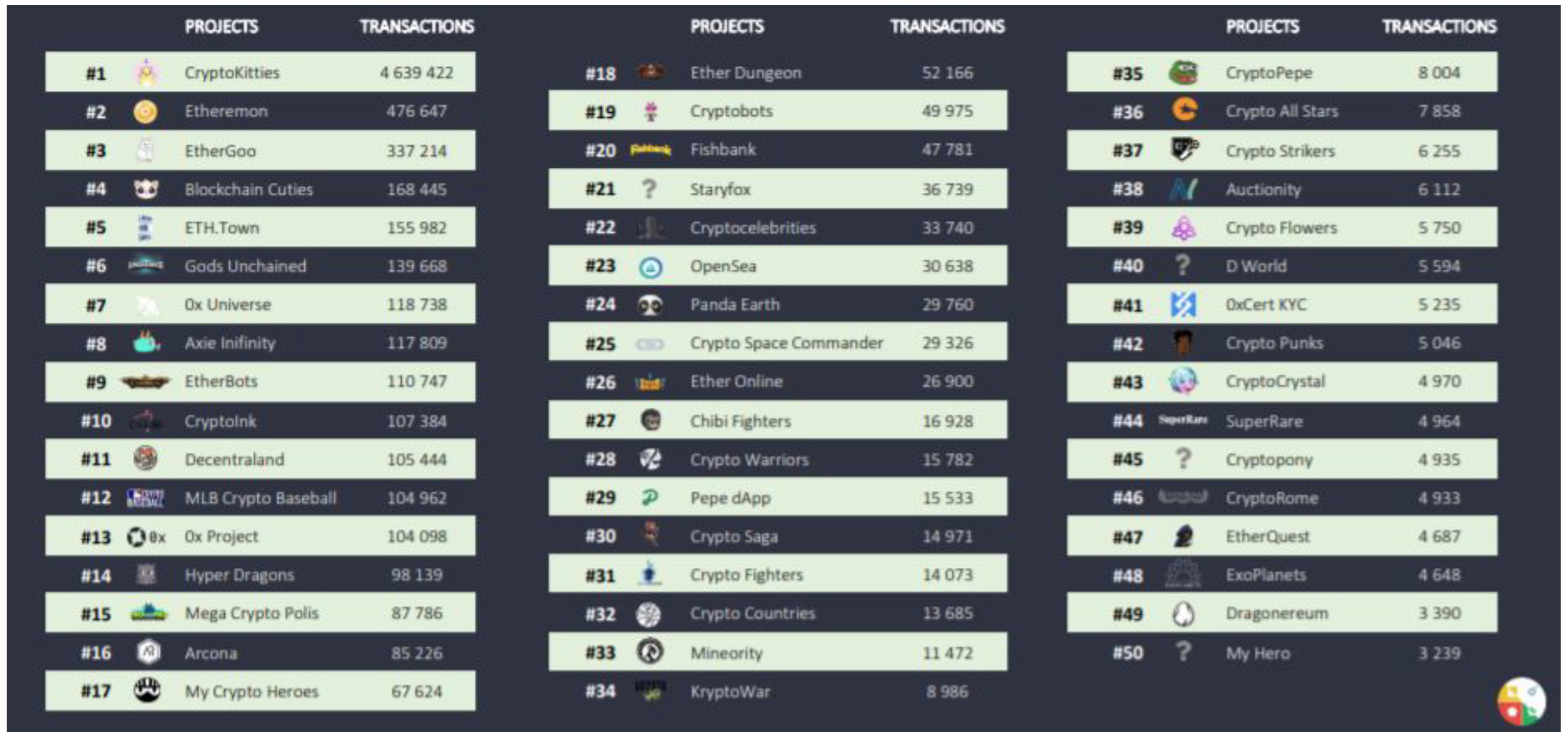
Player-Owned Economies
- Because digital creations in a game now can have real value outside of the game, developers can monetize a substantial portion of the assets they create. As a result, “player-owned” game economies are evolving
- Game developers can define what player-owned economies mean in their respective games. For example, developers can a) sell game assets (e.g. race cars) to players or content creators at wholesale, b) provide cookie-cutter tools for players to make custom modifications, and c) players can resell those new unique assets back into the game through a marketplace
- If players can create their own assets (and are motivated to do so because they can make money), this would reduce today’s 100% creation burden on developers
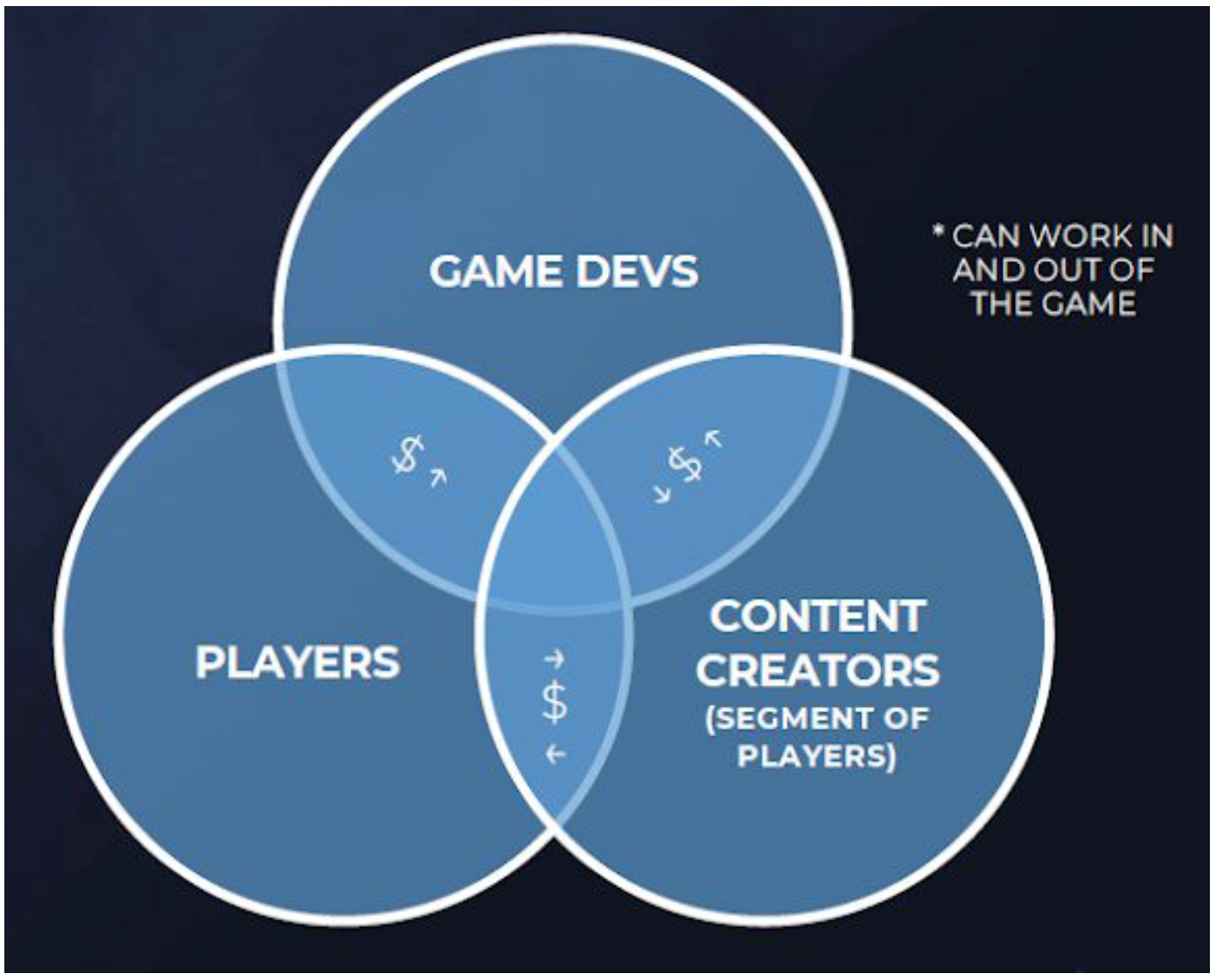
Case Study: Loom Network – Scaling Solution for Blockchain-Based Games
- The user experience for blockchain-based gaming is contingent on transactions having low-latency
- Rather than clogging mainchains like Ethereum or EOS, Loom Network has built an SDK that allows developers to create an unlimited number of sidechains to scale their dApps as needed
- These sidechains are connected to the mainchain through Loom’s central hub called PlasmaChain. This way, sidechains can process transactions without having to touch the Ethereum blockchain
- Loom first integrated its PlasmaChain with Ethereum in 2018, meaning PlasmaChain’s smart contract functionality is compatible with the ERC20 and ERC721 token standards
- On June 6, 2019, Loom completed its integration of PlasmaChain with the TRON blockchain
- Loom’s sidechains (i.e. GameChain) are now being used by multiple games and dApps in production
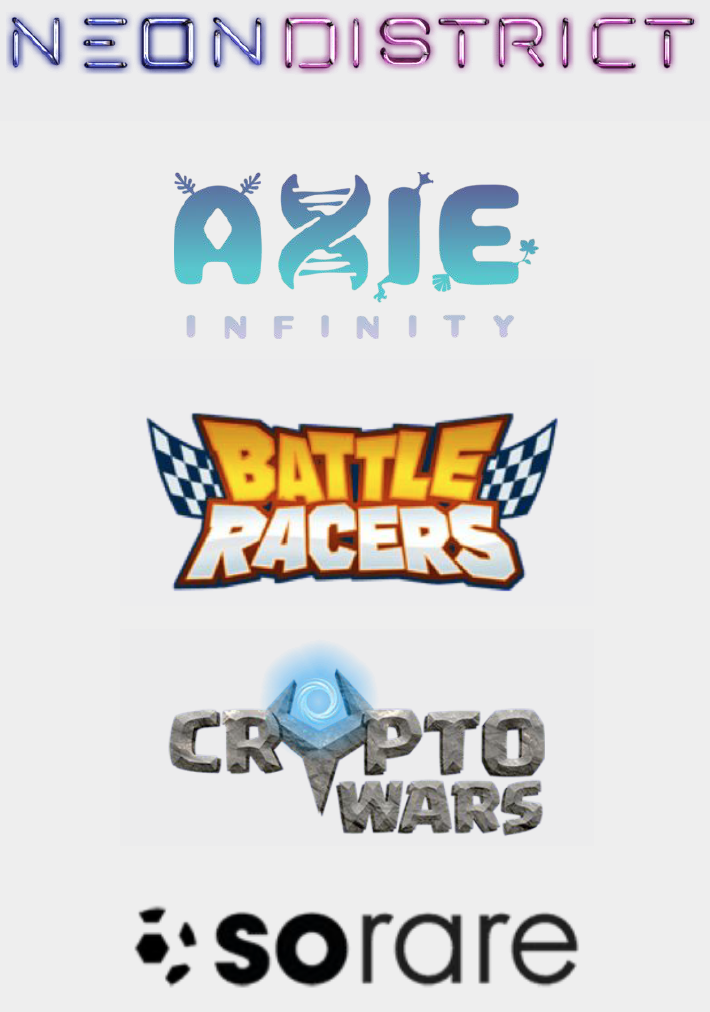
Some Games Building on Loom
Case Study: Enjin & ERC1155 Token Standard
- Founded in Singapore in 2009, Enjin allows gamers to build their own social profiles that connect to game servers. Over 250,000 gaming communities and twenty million gamers are registered on Enjin’s platform
- Enjin is building a facilitation layer on top of Ethereum (wallets, cryptocurrency and NFT, and virtual item management apps) to make asset interoperability possible
- Enjin’s differentiator is its work on a new token standard and smart contract platform, ERC1155
- Unlike ERC721, in which a new smart contract must be deployed for each new instance of an NFT, a single ERC1155 smart contract can govern an infinite number of NFTs
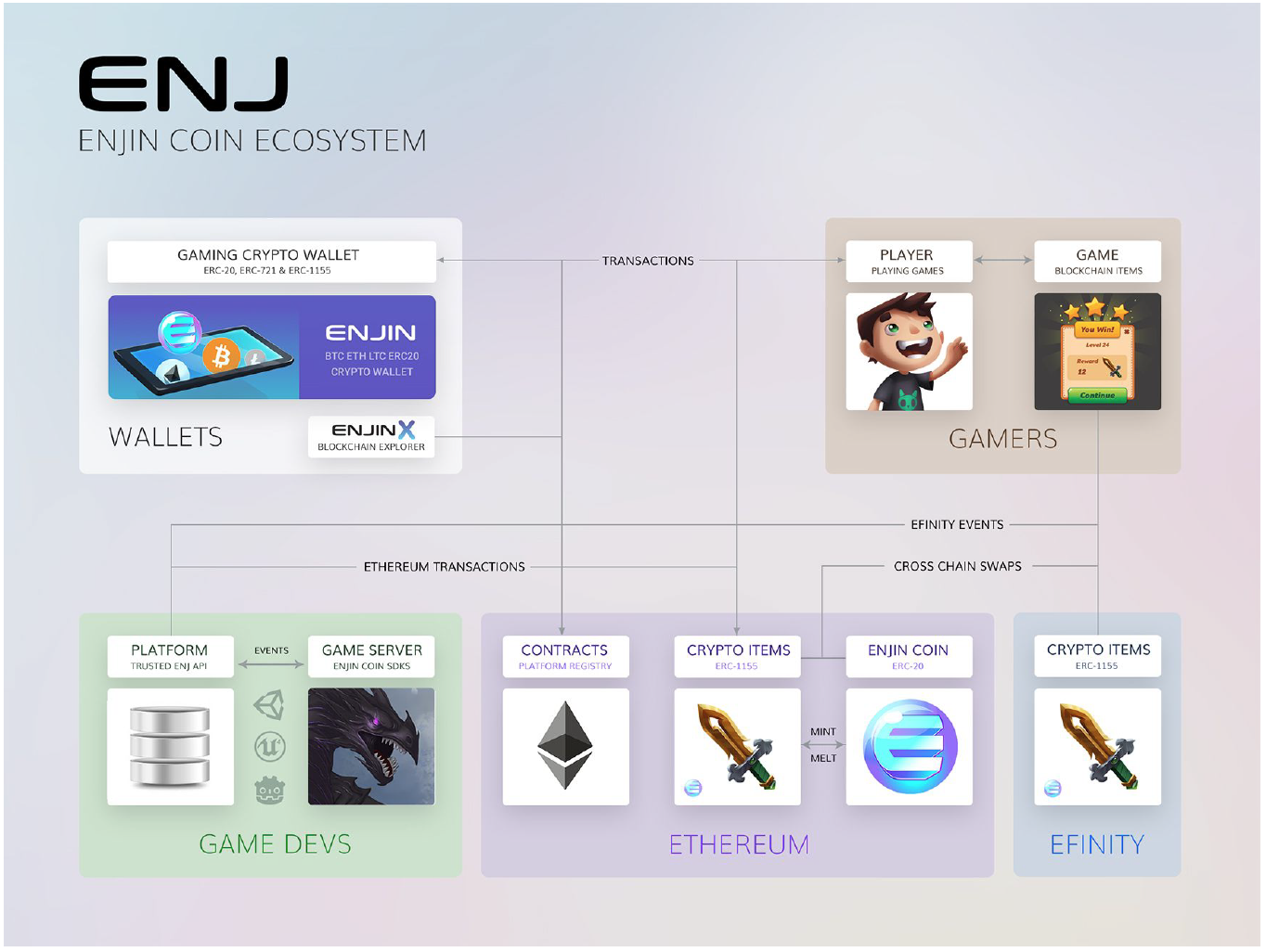
Think of ERC1155 like a vending machine: aplayer pays/inserts a compatible cryptocurrency, and the machine dispensesthe NFT he or she has selected.
Case Study: Decentraland – Merging VR and Digital Collectibles
- Decentraland is a virtual world owned by its users built on the Ethereum blockchain, defined by cartesian coordinates (x,y). The world is divided into ~90,000 parcels of LAND (NFTs). The entire city (Genesis City) is roughly the size of Washington DC
- Each parcel of LAND is ten square meters and can be bought and sold using Decentraland’s cryptocurrency MANA. Users can create, experience, and monetize content and applications on LAND using Decentraland’s SDKs
- The parcels are NFTs whose ownership is recorded on the Ethereum blockchain using the ERC721 standard
- Once VR technology becomes interchangeable with reality, colonization of new worlds will become the focus. MANA NFTs make colonization possible
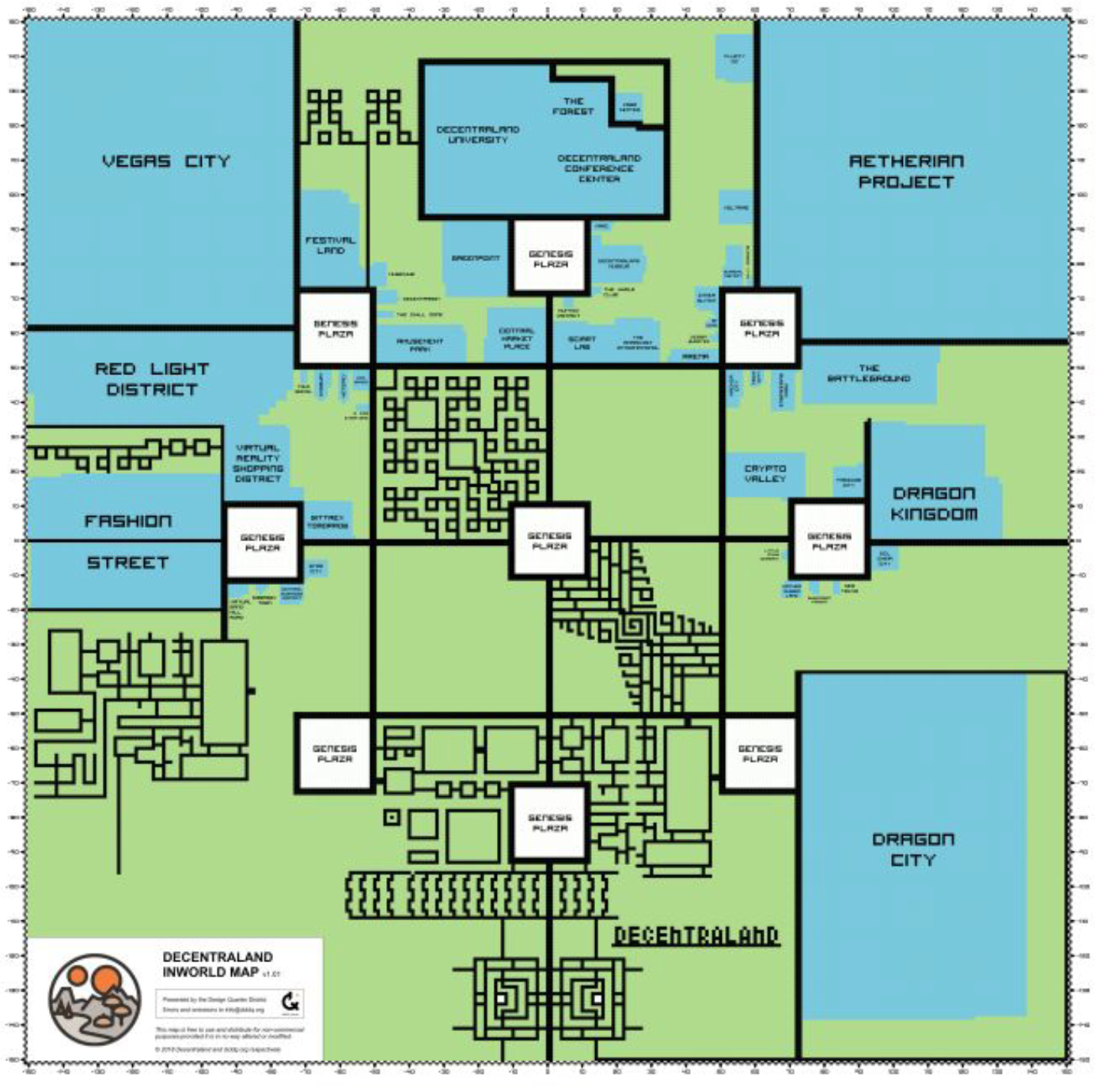
This is part two of a three part series. Click here for part three.
—
Wave Financial, LLC is a Registered Investment Advisor (CRD#292343). This article is for general informational purposes only. Nothing herein is an offer to buy or sell, or the solicitation of any offer to buy, any security or interest in any investment, nor is it intended to be used for marketing purposes to any existing or prospective investor in any jurisdiction, and is subject to correction, completion and amendment without notice.






binance推薦
May 6, 2023 at 2:33 PM
Your point of view caught my eye and was very interesting. Thanks. I have a question for you. https://accounts.binance.com/zh-TC/register?ref=UM6SMJM3